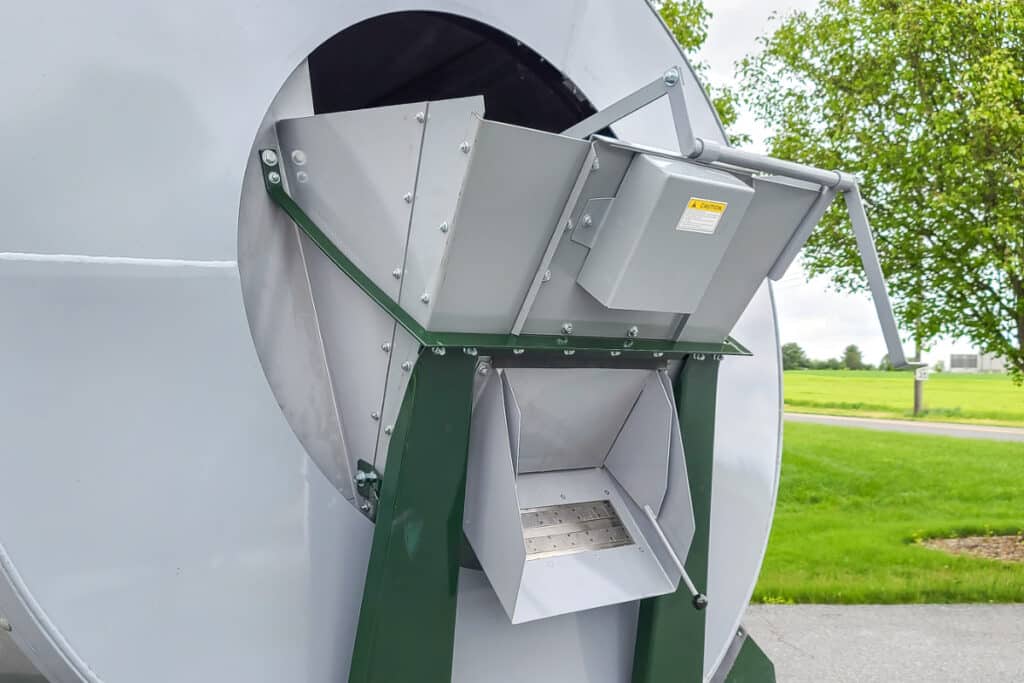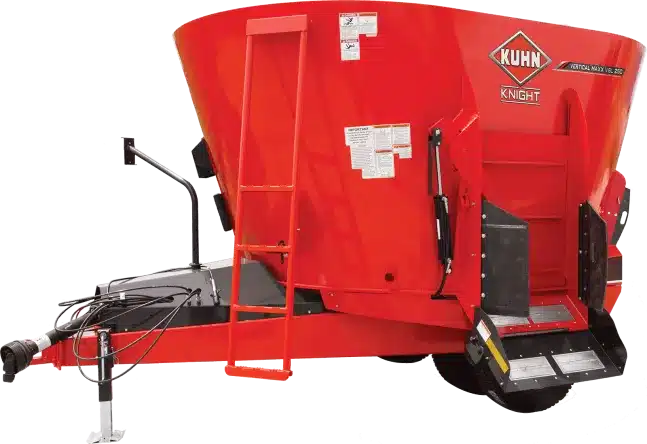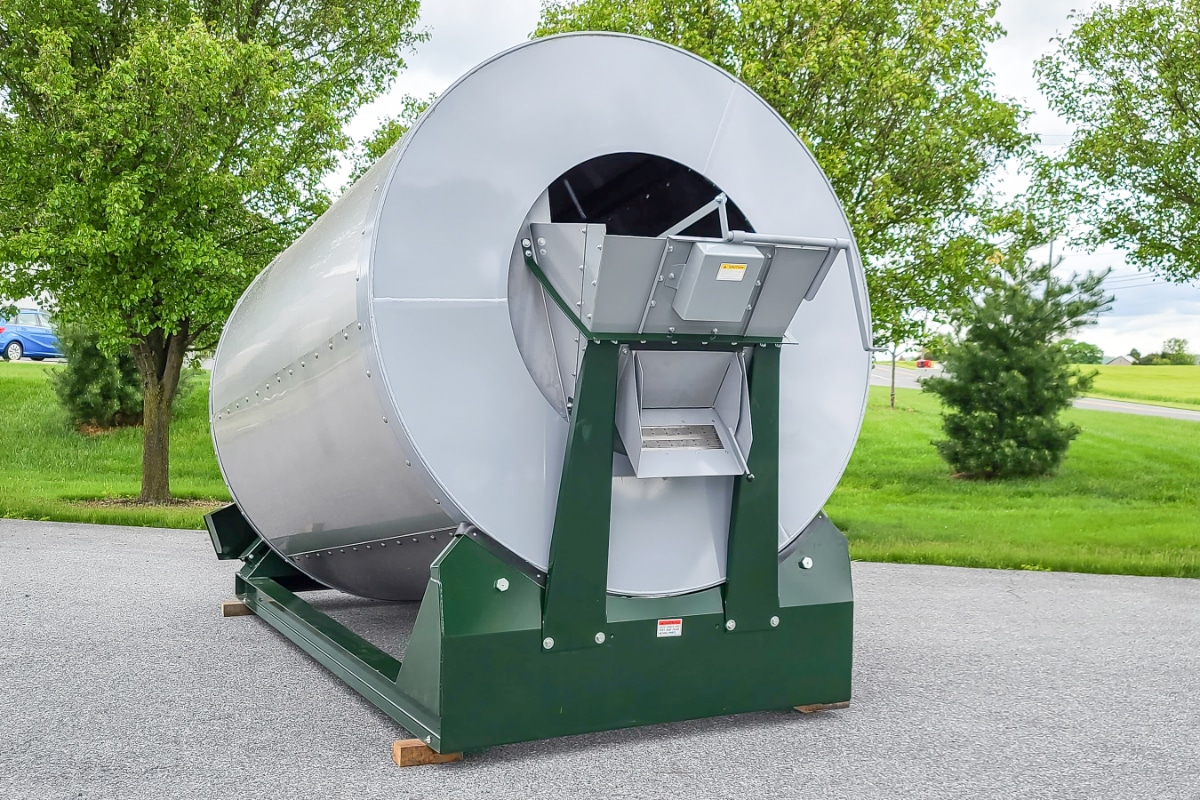Key Takeaways
- Grain mixers are large machines used in agriculture or feed operations to mix grains or seeds for feed and crop production. They usually consist of a central drum (which can be fixed or spinning) and internal mixing augers.
- Horizontal grain mixers rely on an inclined drum and gravity for an efficient mixing process, and usually stay in one place. For this reason, they are often more energy efficient than vertical mixers.
- Vertical mixers rely on central augers and are often moved around behind a tractor for use throughout a farming operation.
Grain Mixers Explained
A grain mixer is a piece of agricultural equipment used for mixing different kinds of grains, grain products or derivatives, and/or supplements for livestock. A grain mixer’s primary function is to create a uniform blend of various grain types or to mix grains with additives, supplements, or other ingredients, usually for animal feed.
Most grain mixers are versatile, however, and are commonly used as a mixer machine for other agricultural uses: as a seed mixer, feed mixer, or even for mixing fertilizer and other enhancements into seed blends.
Common users of grain mixers include:
- livestock farmers, including cows/cattle, poultry, hog, or goat/sheep farmers
- deer farmers who might need a deer feed mixer for food plots or feeding hunting stock
- feed mills that create animal feed mixes and blends for sale to farmers
- growers who might use a grain mixer for fertilizer and seed blends
- seed consultants, who might need a seed blender for mixing proprietary blends of wheat, corn, or similar

Types of Grain Mixers and How They Work
At Farm Master, we manufacture and sell our Farm Master Forage Mixer line, and our Gramin grain and seed mixers. Available in a variety of sizes, our machines offer an alternative design to vertical, top-fed equipment in a variety of ways. Here’s how common mixer mechanisms work.
Horizontal Mixers

Horizontal mixers rely on a large rotating cylindrical tumbler, on its side at a slight incline. This design means that gravity does most of the work, and these mixers are much more energy efficient and require much less maintenance than vertical or top-fed mixers.
Material is added through the top of the hopper at the front of the mixing drum. Once loaded, the machine is turned on and the drum begins rotating at 4-7 RPM (rotations per minute). Inside, at the lower end of the drum, are multiple scoops that pick up the mixture and drop it into the auger in the center of the cylinder.
At the center of the cylinder, a single auger conveys material upwards toward the top, higher end of the drum. The auger spins at 100 RPMs. The partially blended mix is lifted up through the auger and falls off at the peak, sliding back down the drum where it is further mixed as it descends.
This dual mixing action – with the rotating drum and a central auger carrying material from end to end – provides a faster (3-5 minutes for most products) and a much more energy efficient mixing process.
We can mix up to 16,000 pounds of feed with a single 15 hp electric motor (hydraulic motor optional). Both the auger and the drum run on the same motor with a chain and belt pulley system.
When the mix is ready to be emptied out of the mixer, the discharge door is opened at the front of the mixer, and the grain mix falls out of the chute for bagging or distribution into other machinery.
The primary advantage of our horizontal profile is the mixer’s low maintenance requirements, few moving parts, and practical, energy efficient mixing process.
| The Reliability of Our Grain MixersOur grain mixers have been providing reliable, efficient, and simple mixing capabilities of seeds, grain, feed, and more since our founding in 1983.Our customers very rarely replace parts or repair our grain mixing machines. Occasionally we do hear from some of our earliest customers, who after forty years of use, are finally calling us for their first replacement part. |
Open-Top Mixer or Total Mixed Ration (TMR) Mixer

The primary advantage of an open-top, vertical or Total Mixed Ration (TMR) grain mixer is that they can be pulled around the farm for use on-location.
In this case, the drum sits vertically, and feed or grains are dumped in the top. One or two augers then move grain or feed upward, throwing it out to the sides of the drum where they fall back down to be mixed again.
Because TMR mixers rely solely on their central augers for vertical movement, they require much greater power and energy use to blend mixes well. Most vertical mixers rely on a 40 to 90 horsepower tractor for their mixing action.
Farm Master Forage and Grain Mixers: A Mixing Machine to Make Farming and Business Easier
Ultimately, those who require a grain mixer are likely producing large quantities of something, and most will have outgrown a small batch mixer or hand-mixing in a bucket/barrel.
If you’re curious about your first grain mixer, or considering an upgrade from your current grinder mixer, we’d love to help.
Call or get in touch through our website to learn more.
FAQs about Grain Mixers
Can a gran mixer mix wet ingredients?
Our grain mixers are often used to mix feed or grain with molasses as a sweetener.
Our mixers are also commonly used with cotton seed, in which water is added to the mixer to accelerate the cotton seed germination process. This can give cotton growers a 2-week head start on the growing season.
We recommend up to 10% wet material in our mixers, which is sufficient for most common agricultural needs.
Do grain mixers also grind?
A grain mixer is not the same as a grinder, and you will need a separate machine for grain or feed grinding.
If you’re already working with a powder, our mixers do a great job loading and mixing powdered ingredients or additives.
How big is a grain mixer?
We make horizontal grain mixers from 98 cubic feet to over 600.

